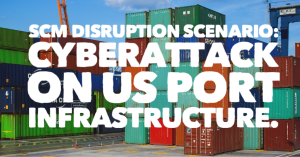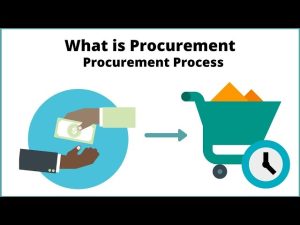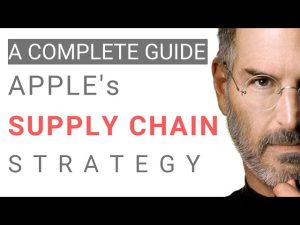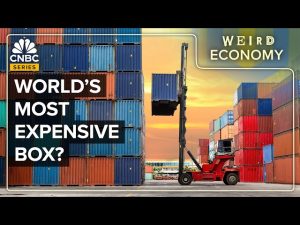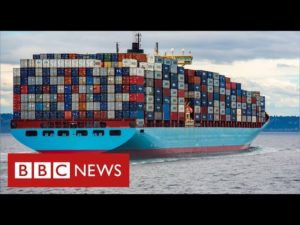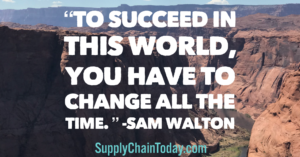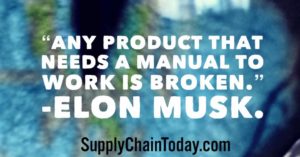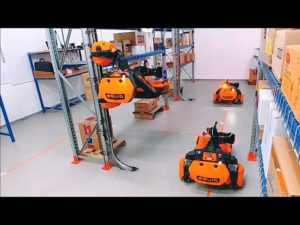What is Supply Chain?
A supply chain is a network of organizations, people, activities, information, and resources involved in the production, handling, and distribution of goods and services. It includes all the activities and processes that are required to move a product or service from the supplier to the customer, including the sourcing of raw materials, the production of goods, the storage and transportation of goods, and the distribution and delivery of products to the end customer.
The supply chain is a critical component of many businesses, as it plays a key role in ensuring that goods and services are delivered to customers in a timely and cost-effective manner. Effective SCM involves coordinating and optimizing the various activities and processes within the supply chain to ensure that they are aligned with the needs of the business and its customers.
There are several key elements of a supply chain, including:
- Suppliers: These are the organizations that provide the raw materials and components used to produce goods and services.
- Manufacturers: These are the organizations that transform raw materials into finished goods through the process of production.
- Distributors: These are the organizations that handle the storage and transportation of goods from the manufacturer to the customer.
- Retailers: These are the organizations that sell goods and services to the end customer.
- Customers: These are the individuals or organizations that purchase and use the goods and services provided by the supply chain.
Pros and Cons of Supply Chain
Some potential advantages of a supply chain include:
- Increased efficiency: A well-managed supply chain can help businesses operate more efficiently by streamlining the flow of goods and information.
- Enhanced customer service: A supply chain that is responsive to customer needs can help businesses provide better service and build customer loyalty.
- Reduced costs: By optimizing the flow of goods and information, businesses can reduce waste and minimize costs.
- Improved competitiveness: An efficient supply chain can help businesses respond more quickly to market changes and maintain a competitive edge.
However, there are also potential disadvantages to consider:
- Complexity: Managing a supply chain can be complex, as it involves coordinating activities and information across multiple organizations and stakeholders.
- Dependence on external factors: A supply chain is subject to external factors such as changes in market demand, economic conditions, and regulatory environment, which can disrupt operations.
- Vulnerability to risks: A supply chain can be vulnerable to risks such as natural disasters, transportation disruptions, and supplier failures, which can impact the availability and quality of goods and services.
- Cost: Establishing and maintaining SCM can be expensive, as it requires investments in infrastructure, technology, and human resources.
Cost Savings: Supply Chain
There are several ways that a well-managed supply chain can help businesses save costs:
- Reduced inventory costs: By optimizing inventory levels, businesses can reduce the amount of money tied up in inventory, as well as the costs associated with storing and managing it.
- Lower transportation costs: By optimizing transportation routes and modes, businesses can reduce the costs of moving goods from one location to another.
- Improved supplier negotiations: By establishing long-term relationships with suppliers and leveraging their economies of scale, businesses can negotiate better prices for raw materials and other inputs.
- Reduced lead times: A more efficient supply chain can help businesses reduce the time it takes to get goods from suppliers to customers, which can help reduce carrying costs and improve cash flow.
- Enhanced quality: By implementing quality control measures at different points in the supply chain, businesses can reduce the costs associated with defective products, such as returns and warranty claims.
- Increased flexibility: A flexible supply chain can help businesses respond more quickly to changes in market demand, which can help reduce the costs associated with over- or under-production.
Supply Chain Management In 6 Minutes
This is a good basic explanation of “What is SCM?” This comes from a college course introducing supply chains. To get into further details of SCM please see the links below.
What is SCM? Here Is What You Need to Know.
SCM Resources
- Beer Game Explained.
- Continuous Improvement Training.
- Get a Job in SCM
- Need SCM Planning and Strategy Training? Try these resources.
- Postponement Strategy
- Procurement Manager Interview Questions.
- SCM Collaboration on Social Media
- SCM Training & Overview.
- Supply Chain and Strategy Key Concepts.
- What Is Design Thinking?
- What is SCM, and should you major in it?
Train by Primary SCM Process
- Plan it: SCM Planning and Strategy.
- Buy it: Supplier Management and Procurement.
- Store it: Distribution, Warehouse and Inventory Management.
- Make it: Manufacturing.
- Ship it: Transportation, Logistics and Shipping.
- Return it: Return and Reverse Logistics.
SCM Quotes
- “We care about every worker in our worldwide supply chain… what we will not do – and never have done – is stand still or turn a blind eye to problems in our supply chain. On this you have my word.” ~Tim Cook, CEO Apple.
- “Without logistics the world stops.” ~Dave Waters
- “1. Increase Visibility. 2. Reduce Variability. These two activities encompass all layers of supply chain management.” ~SupplyChainToday.com.
- “Leaders win through logistics. Vision, sure. Strategy, yes. But when you go to war, you need to have both toilet paper and bullets at the right place at the right time. In other words, you must win through superior logistics.” ~Tom Peters
- “At Wal-Mart, it goes back to Sam Walton and the foundation and business model that we simply operate for less, or everyday low cost. We’re known for operating in a very efficient way and then giving those savings to customers.” ~Mike Duke, former CEO of Walmart.
- “SCM is like nature, it is all around us.” ~Dave Waters.
- “If you think of standardization as the best that you know today, but which is to be improved tomorrow; you get somewhere.” ~Henry Ford, Ford Motor Company.
- “We need to make sure these supply chains are secure and reliable. I’m directing senior officials in my administration to work with industrial leaders to identify solutions to this semiconductor shortfall and work very hard with the House and Senate.” ~President Biden
- “All we are doing is looking at the time line, from the moment the customer gives us an order to the point when we collect the cash. And we are reducing the time line by reducing the non-value adding wastes.” ~Taiichi Ohno, father of Toyota Production System
- “To understand the predictive enterprise research Artificial Intelligence, Machine Learning and Deep Learning.” ~Dave Waters.
